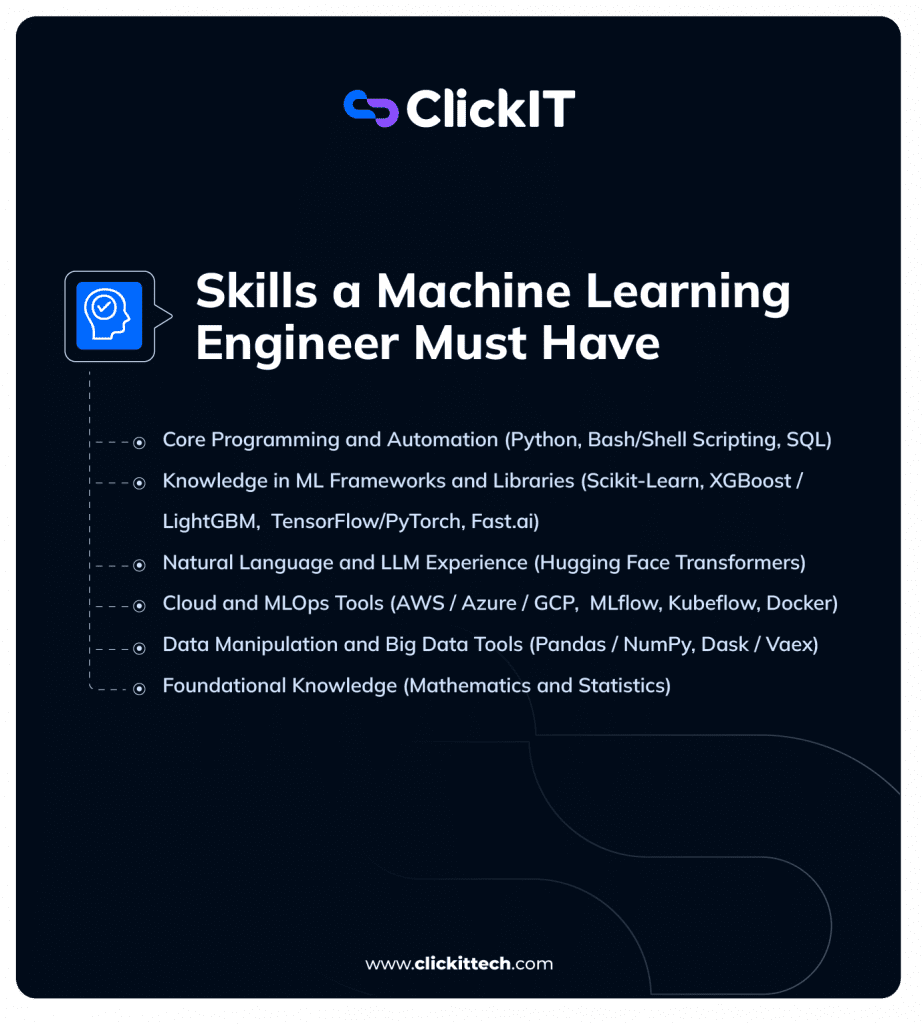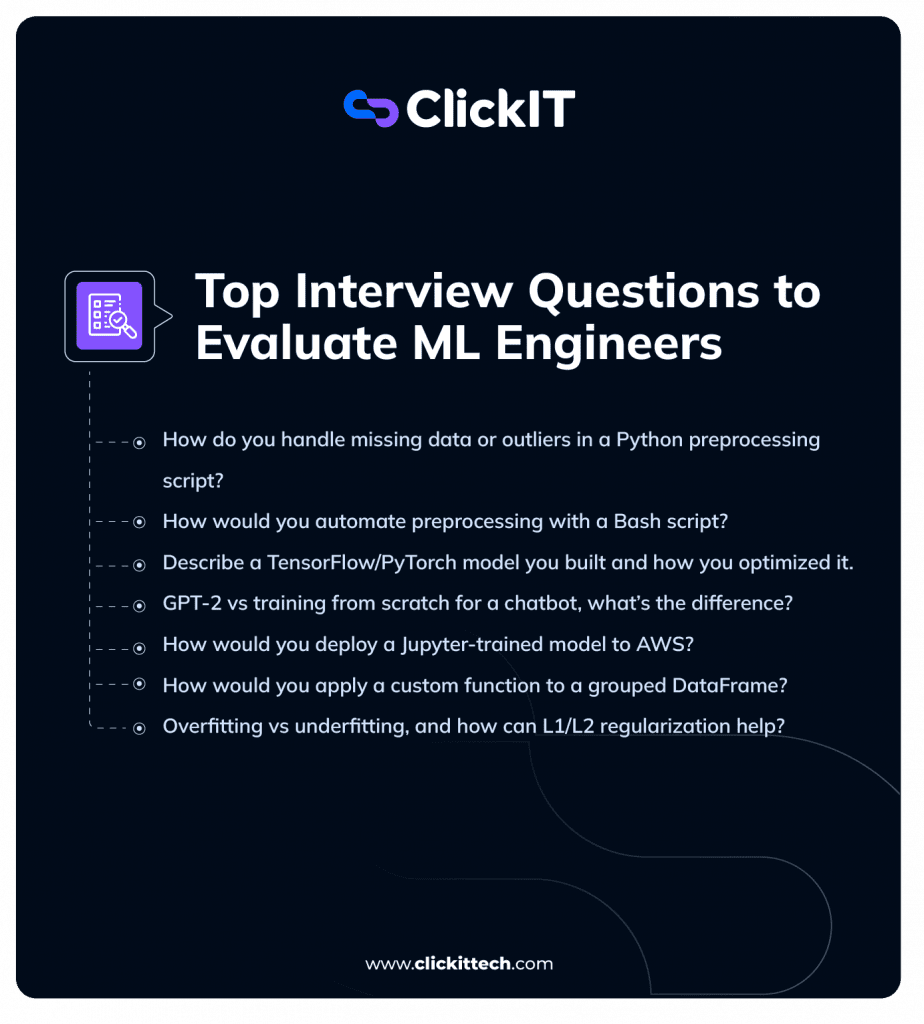In 2025, ML becomes an integral part of business operations, and the priority to hire machine learning engineer remains at the top for most organizations.
According to a World Economic Forum (WEF) report on Future of Jobs 2025, ML and AI specialists rank among the top three fastest-growing roles globally. Similarly, Gartner reports that 94% of Power and Utility CIOs plan to invest in AI and ML talent by the end of 2025.
LinkedIn data shows a 74% year-over-year growth in ML roles across the Americas. These stats suggest that organizations should prioritize machine learning talent and hire skilled ML engineers to stay ahead in the competition.
In this blog, I will guide you through the essentials to hire a machine learning engineer from Latin America in 2025.
I will also explore why LATAM is a strategic talent hub, what technical and soft skills to prioritize, how to evaluate candidates, and what to expect in terms of qualifications and real-world experience.
- What Skills Should a Machine Learning Engineer Have?
- How Important are Degrees for Being an ML Engineer?
- What are The Best Interview Questions to Evaluate an ML Engineer?
- Why Hire a Machine Learning Engineer from LATAM?
What Skills Should a Machine Learning Engineer Have?
When you hire ML engineers from Latin America, technical depth should be non-negotiable. In addition, core programming skills, hands-on ML experience, and knowledge of deployment at scale are key areas that you should focus on.
Let me break down the must-have skills for an ML engineer from LATAM:

a) Core Programming and Automation
Python
Python is the most widely used programming language globally for machine learning and data science. When LATAM engineers are fluent in Python, they can often manage both research and production environments.
Bash/Shell Scripting
It helps automate ML workflows, manage servers, and handle pipeline operations. Proficiency in Bash/Shell scripting means engineers can streamline repetitive tasks, integrate with DevOps tools, and maintain reproducible environments.
SQL
SQL is a key skill for querying structured data sources and integrating with enterprise data warehouses. Candidates with strong SQL skills can extract meaningful insights from large datasets, optimize queries for performance, and support data-driven model development.
b) Machine Learning Frameworks and Libraries
Scikit-Learn
Candidates with a strong grasp of scikit-learn open source libraries have a strong understanding of ML algorithms like SVMs, Regression, and Clustering, etc. Experience in applying scikit-learn to real-world problems is the key focus.
XGBoost / LightGBM
Powerful gradient boosting frameworks like Extreme Gradient Boosting and Light Gradient Boosting Machine are popularly used in Kaggle competitions and real-world tabular data challenges. As such, candidates should be familiar with optimizing models using LightGBM or XGBoost.
TensorFlow/PyTorch
TensorFlow and PyTorch are considered the backbone tools for deep learning in the ML space. Proficiency in either one is a must for building neural networks, CNNs, RNNs, and custom models.
Fast.ai
Fast.ai is a high-level deep learning library built on PyTorch that enables rapid prototyping and experimentation while simplifying model development. Experience in Fast.ai implies that the candidate can quickly build models.
c) Natural Language and LLM Experience
Hugging Face Transformers
Today, ML engineers are expected to have experience in fine-tuning and deploying LLMs. Familiarity with Hugging Face implies that they can efficiently implement text classification, summarization, translation, and chatbot models.
d) Cloud and MLOps Tools
AWS / Azure / GCP
AWS, Azure, and GCP are the three most popular cloud platforms. ML Engineers should have hands-on experience in at least one major cloud platform for scaling models and deploying APIs in production.
MLOps Tools
MLOps tools like MLflow, Kubeflow, Docker, and CI/CD pipelines are critical for automating ML workflows, model versioning, and maintaining production-grade reliability. Look for candidates with experience in this area.
e) Data Manipulation and Big Data Tools
Pandas / NumPy
Pandas and NumPy are core libraries for data cleaning, analysis, and preparation. These tools are the foundation for any data workflow. Proficiency in Pandas or NumPy ensures that the candidate can handle messy real-world data and efficiently prepare it for modeling.
Dask / Vaex
These tools are used to work with large datasets that don’t fit into memory. Experience with these tools indicates the candidate’s readiness to scale with enterprise-grade data volumes.

Foundational Knowledge
Mathematics and Statistics
ML engineers should demonstrate knowledge in areas like linear algebra, probability, optimization, and statistical inference. These skills are the basic structure for most ML algorithms and are vital for model tuning and evaluation.
Before you hire machine learning engineer talent from LATAM, keep in mind that an ML engineer is not just another coder but a problem-solver with technical skills to build and maintain intelligent systems at scale.
How Important are Degrees for Being an ML Engineer?
In the past, most machine learning roles required a degree in Computer Science, Data Science, or a related STEM field. To hire a machine learning engineer from LATAM, most organizations look for a Bachelor’s or Master’s degree from LATAM institutions like Tecnológico de Monterrey or Universidade de São Paulo.
These degrees provide a strong foundation in programming, algorithms, and mathematics, which is crucial for ML. A survey by Stack Overflow in 2024 found that 66% of ML engineers globally hold at least a bachelor’s degree, with 30% having a master’s or higher.
While degrees are helpful, the focus of hiring managers is no longer on degrees alone, as they do necessarily showcase a candidate’s real abilities.
Practical Experience is Now the Priority in 2025
Today, employers prioritize hands-on experience to hire a machine learning engineer. Most hiring managers look for project portfolios, Kaggle competitions, GitHub contributions, open-source involvement, and real-world deployments.
This is because ML models are just 20% of the job for an ML engineer. The rest involves data wrangling, cloud deployment, monitoring, and iterative improvements, which are not properly taught in classrooms or textbooks.
For instance, fine-tuning an LLM using Hugging Face or building a recommendation system using scikit-learn reveals the hands-on skills of a candidate.
A strong portfolio of real-world ML projects is often the best indicator of success in a 2025 hiring environment. Ask a best practice, ask the candidate to walk through a past ML project, explaining what problem they solved, what model they used, and how they evaluated success.
Hybrid Pathways are Common
ML engineers often come from bootcamps, research internships, or online certifications from organizations like fast.ai, Coursera, or DeepLearning.AI rather than traditional degrees. What matters the most today is their ability to build, iterate, and deploy but not just memorize algorithms.
What are The Best Interview Questions to Evaluate an ML Engineer?
To hire machine learning engineer profiles from LATAM, you should adopt a strategic approach of evaluating both technical skills and soft skills. We should ensure that the candidates can deliver results and also work well in a team.
Here are some of the common questions to ask when you hire ML engineers from LATAM:

Technical Skills
When it comes to technical skills, ask questions that will ensure that the candidate can not just build a model but explain it, tune it, and deploy it.
Here are a few sample interview questions for technical evaluation:
Core Programming
- Can you write a SQL query to join two tables and calculate the average churn rate by customer segment?
- Can you walk me through a Python script you wrote to clean and preprocess a dataset? How did you handle missing data or outliers?
- How would you write a Bash script to automate data preprocessing for a daily ML pipeline?
Machine Learning Frameworks
- How would you choose between a decision tree and XGBoost for a tabular dataset with missing values?
- Describe a deep learning model you built using TensorFlow or PyTorch. How did you optimize its performance?
- Explain how you used scikit-learn to solve a classification problem. Which algorithm did you choose and why?
Natural Language and LLM Experience
- Can you describe a project where you implemented an NLP solution? Which tools or libraries did you use, and how did you preprocess the text data?
- Have you fine-tuned a transformer model before? Walk me through how you would fine-tune a BERT or DistilBERT model on a sentiment analysis dataset.
- What’s the difference between using a pretrained transformer like GPT-2 and training a model from scratch for a chatbot application?
Cloud and MLOps Tools
- Walk me through an end-to-end ML project you’ve worked on. What challenges did you face and how did you overcome them?
- What steps would you take to deploy a model trained in Jupyter Notebook to production on AWS?
- How would you set up a pipeline to deploy and monitor an ML model in production using a tool like MLflow or Kubeflow?
Data Manipulation and Big Data Tools
- How would you handle missing values in a large dataset using Pandas? When would you choose to impute vs drop?
- Explain how you would optimize a data pipeline that involves grouping and aggregating a massive dataset. Would you use Pandas, NumPy, Dask, or Vaex, and why?
- Can you demonstrate how to apply a custom function to a grouped DataFrame using groupby() and apply()?
Foundational Knowledge
- Explain the concept of gradient descent and how it’s used in training a neural network. What happens if the learning rate is too high?
- Can you explain the difference between overfitting and underfitting? How do regularization techniques like L1 and L2 help mitigate them?
- What does the bias-variance tradeoff mean in machine learning? How would you detect high variance in a model?
Soft Skills
ML engineers must collaborate across teams and communicate effectively with non-technical stakeholders. Especially in remote Latin American roles, strong communication is crucial.
So, look for candidates who are proactive and responsive, understand the business context, and speak clear English.
Here are a few sample questions to assess soft skills:
- How do you handle disagreements over model results or methodology with teammates?
- Can you explain what your last ML model did to someone with no data science background?
- Tell me about a time when you had to change your approach based on stakeholder’s feedback.
- Describe a situation where you worked with a cross-functional team like data scientists, developers, or business stakeholders. How did you ensure effective communication?
- How do you stay updated on the latest ML tools and techniques, especially in a fast-evolving field like AI?
- Can you explain a complex ML concept, like overfitting, to a non-technical stakeholder in simple terms?
- How do you prioritize tasks when working on multiple ML projects with tight deadlines?
Cultural and Timezone Fit
Nearshore alignment is a big advantage when you hire machine learning engineer from LATAM. However, check out the availability and experience working with international teams.
Here are a few questions to pose:
- What is your availability during core U.S. business hours?
- Do you have experience working with distributed or international teams?
- Are you familiar with Agile or DevOps workflows?
The goal is to hire ML Engineers from LATAM who can demonstrate strong coding and modeling skills in addition to communicating clearly, thinking critically, and collaborating easily across remote teams.
Why Hire a Machine Learning Engineer from LATAM?
Companies that hire ML engineers from Latin America gain unique advantages with regard to quality, cost, and collaboration. Here’s why LATAM stands out:
a) Better Time Zones and Real-time collaboration
One of the biggest advantages of hiring machine learning engineers from Latin America (LATAM) is the timezone alignment. Especially countries like Mexico, Argentina, and Colombia operate in time zones that are almost close to US business hours, typically within a 1-3 hour difference.
This advantage of real-time collaboration, agile development cycles, and quick resolution gives a major edge for LATAM countries over offshore teams from Europe or Asia. Especially for teams using Scrum or continuous integration workflows, closer time zones reduce communication delays and increase productivity.
b) Cost Savings Without Compromising Quality
Organizations that hire machine learning engineer expertise from LATAM can reduce costs by up to 30%–50% compared to US talent while still maintaining high technical standards.
Accelerance reports that the average hourly rate for senior software engineers in Mexico is $50–$70, compared to $100–$140 in the US. Multiple salary benchmarks show that hiring ML or AI engineers from Latin America offers 30–50% savings, compared to US compensation without compromising on skill or delivery.
The average annual salaries in LATAM range from $40,000 to $80,000, while the same talent attracts a cost of $120,000 to $200,000 in the US. It means you get top-tier engineers while saving on costs.
c) Why Mexico Stands Out?
Mexico is emerging as the top destination for machine learning talent for multiple reasons. A strong educational system, vibrant tech hubs, and growing English proficiency are to name a few.
- Strong STEM Education Pipeline: Mexico boasts top universities, such as Tecnológico de Monterrey and UNAM, that produce highly skilled graduates in Computer Science and AI. According to Mexico’s National Association of Universities, 120,000 engineering students were enrolled in 2023.
- Growing Tech Hubs: Global tech giants and local startups are investing heavily in cities like Guadalajara, Mexico City, and Monterrey, which are often referred to as the “Silicon Valley of LATAM”.
- English Proficiency: When it comes to English language skills, Mexico scores well among the top LATAM countries, especially in urban tech centers.
- Trade Agreements and Work Visas: The United States-Mexico-Canada (USMCA) agreement enables companies to navigate legal and contractual frameworks more easily compared to companies in other regions.
Hire our certified Machine Learning engineers from LATAM in 3–5 days
Start your ML project today → Book a Free Call
These advantages make Mexico a top choice for building high-performing ML teams.
When you hire machine learning engineer from LATAM in 2025, you are not just filling up a job role. It is about gaining the extra edge, as LATAM engineers, especially those from Mexico, offer a unique blend of strong technical education, time zone alignment, and cost efficiency.
As the global demand for AI technologies rises, companies that look beyond traditional hiring places and acquire nearshore talent will excel faster, spend smarter, and build better. Be it expertise in NLP, cloud-based deployment, or building scalable ML systems, LATAM engineers are equipped with the right expertise to deliver production-ready solutions.
Regardless of the location of your company, focus on real-world experience, core technical competencies, and clear communication skills to build high-performing ML teams.
FAQs
Yes, it is safe and legal to hire ML engineers from LATAM. Most LATAM countries have well-established frameworks for remote contracting.
Moreover, many US companies utilize Employer of Record (EOR) services or global payroll platforms, such as Deel or Remote, to remain compliant. Additionally, trade agreements like the USMCA facilitate even smoother cross-border collaboration with Mexico.
Use trusted platforms like Turing, Toptal, Revelo, or Wellfound (formerly AngelList) to source LATAM talent for ML projects.
You can also tap into university networks, AI hackathons, or hire through specialized recruiters focused on LATAM tech hiring. Local job boards like Computrabajo (Mexico) or BairesDev also connect you with skilled engineers in the region.
Most LATAM engineers, especially in Mexico, possess good conversational English skills. As a best practice, conduct interviews in English and include tasks like explaining technical concepts or presenting a project to assess their communication skills.






